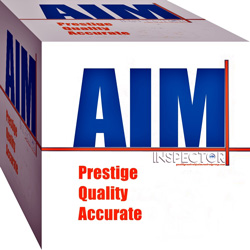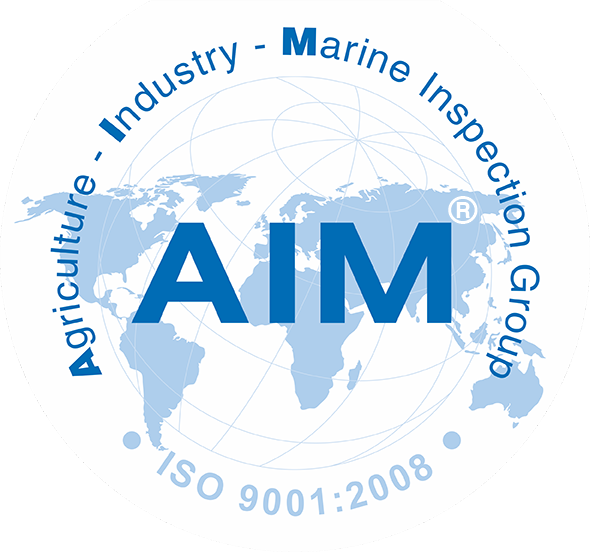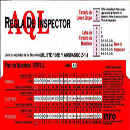AQL quality inspection of goods product and garment
AQL quality inspection of goods product and garment
The AQL quality inspection of goods product and garment in textiles and consumer products is the Acceptable Quality Chart in the fashion textile industry (AQL) so that AIM Control (AIM Group®) performs an inspection that meets ISO standards.
Quality Control Managers:
-
AIM Control (AIM Group®) Quality Control Inspector Managers are often referred to as QC Inspectors to carry out the AQL quality inspection of goods product and garment at supplier’s premise.
-
AIM Control (AIM Group®) experienced QC inspector manager is very important to any organization involved in the production of apparel and others
-
A good quality control program requires a competent quality control manager (or quality control supervisor). The quality control manager is responsible for overall quality control systems, procedures, and directions.
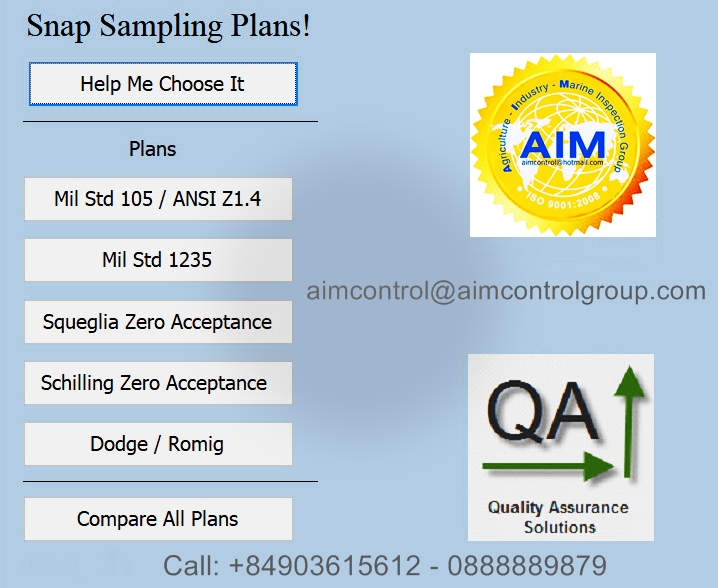
All quality inspectors of AIM Control (AIM Group®) (also referenced as QC's) report to the quality control inspector manager of AIM Control. Therefore, Our QC manager have experienced with delegating responsibility and have good skills managing others. The person that fits the role of our QC supervisor must have more than just knowledge of manufacturing, inspection processes, and audits. They must have full manufacturing knowledge as well as top notch managerial skills.
The size of the garment factory or volume of business, determines the number of quality control staff your QC department should have. If you own a factory or manufacturing company request us for QC staff, please kindly contact with us to help you determine the proper number of employees needed to properly manage your volume of production.
Although there are many important elements of an effective quality control program, two elements are essential: leadership of management and careful inspection of merchandise. It is beneficial for garment companies, buyers to maintain high quality standards. Firstly, your company, suppliers, sellers, buyers will be respected for shipping only high quality garments. Secondly, if you have a good quality assurance system in place, you will avoid costly charge backs.
Make sure that your sides have a very good QC Manager.
Piece Good Inspection of quality
If you want to produce high quality garments, you need high quality piece goods. When a sewing factory receives fabric from the mill, it is difficult to conduct a full 100% inspection of the fabric. Apparel recommends a minimum 10% inspection of all piece goods prior to spreading the fabric. Many factories attempt to inspect the fabric during the spreading, but this is probably unrealistic to depend on the spreader to control the fabric quality evaluation. The fabric should be inspected prior to the fabric reaching the cutting tables.
There are several piece good inspection systems for measuring the quality of fabrics. This is a Ten-Point System, which was developed in the 1950's. That system assigns penalty points to each defect, depending on the length of the defect. The system is a bit complicated because the points per length vary for warp and filling defects.
There is also a Dallas System published in the 1970's. That system was developed specifically for knits. According to this system, if any defect was found on a finished garment the garment would then be termed a second. In regard to fabric, this system defines a second as "more than one defect per ten linear yards, calculated to the nearest ten yards.
For example, one piece 60 yards long would be allowed to have six defects. Another system for evaluating piece goods is the Four-Point System. In this system, you should inspect at least 10 percent of the total rolls in the shipment. Make sure to select at least one roll or each color way. The defect classification works as follows.
Size of Defect:
-
3 inches or less = 1 point penalty
-
Over 3 inches but not over 6 inches = 2 point penalty
-
Over 6 inches but not over 9 inches = 3 point penalty
-
Over 9 inches = 4 point penalty
Note: a maximum of 4 points should be charged to one linear yard. Also, note that only "major" defects are charged.
The acceptable score varies. Many companies use 40 points per 100 yards as acceptable defect rate. However, others may find this not acceptable...
Here is some math to show you an example.
-
Total Yardage received: 5400
-
Acceptance Point-count: 40 per 100 yards
-
Total Yards Inspected: 540
-
Total penalty points found in the sample inspection: 150 points
-
150 divided by 540 times 100 = 27.77 points per 100 yards (because the allowance is 40 points per 100 yards, this shipment would be acceptable).
Above are only a few examples of fabric testing procedures. In fact, above is only a short summary of the processes. If you are responsible for inspecting fabric, you really will need to do inspection on this subject, please kindly contact with us.
Cutting Room Quality Control
If you have not an experienced cutting room staff to inspect, do NOT hesitate to contact with us for inspecting, our surveyors/ inspectors assume that they are doing everything perfectly.
Effective inspection requires random examination of cutting operations. The inspectors should not develop a set routine. You do not want the workers to be in the habit of knowing when and how you will conduct inspection. You should make every effort to get a fair representation of the cutting production by making random checks on the cutting room floor. When checking spreaders, make certain to check for marker placement, shading, table marks, etc. Here are a few issues to check.
Marker Placement: check that the marker is placed on the spread with the edge parallel to the selvage of the piece goods. Verify that all cut pieces will be complete.
Shading: unless all parts are plymarked, it is essential to have a system to control shading.
Table marks: check the table marks as they table is marked. Allow no minus tolerance for the splices.
Markers: ensure that no markers are creased, damaged, or have overlapped parts.
Splices: after completion of the spread, check splice laps to see that both piles extend past the marked splice by no less then 1/2 inch and no more then 1 inch.
Narrow Goods: after completion of the spread, check the far edge of the spread to see that all plies extend beyond the marker line.
Tension: check tension during spreading. This is very important on knit fabrics.
Count: check the count after completion of spreading, and before cutting. Count all plies at both ends. There should be no tolerance.
Leaning: check carefully to ensure that one edge of the fabric is square to table top. Visually inspect the alignment of the edge with the table top.
Record the spreading defects by the quantity of defects found for each checkpoint. Any defective work discovered by the inspector should be immediately corrected.
Do not only record the problem. Make sure to fix the problem immediately.
Fabric Defects
Skewed or Bias: condition where filling yarns are not square with warp yarns on woven fabrics or where courses are not square with wale lines on knits.
Back Fabric Seam Impression: backing fabric is often used to cushion fabric being printed. If there is a joining seam in the backing fabric, an impression will result on printed fabric.
Barre: occurs in circular knit. Caused by mixing yarn on feed into machine. Fabric will appear to have horizontal streaks.
Birdseye: caused by unintentional tucking from malfunctioning needle. Usually two small distorted stitches, side by side. This term should not be confused with birdseye fabric which is in fact created intentionally.
Bowing: Usually caused by finishing. Woven filling yarns lien in an arc across fabric width: in knits the course lines lie in an arc across width of goods. Critical on stripes or patterns and not as critical on solid color fabrics.
Broken Color Pattern: Usually caused by colored yarn out of place on frame.
Color Out: the result of color running low in reservoir on printing machine.
Color Smear: The result of color being smeared during printing.
Crease Mark: differs from crease streak in that streak will probably appear for an entire roll. Crease mark appears where creases are caused by fabric folds in the finishing process. On napped fabric, final pressing may not be able to restore fabric or original condition. Often discoloration is a problem.
Crease Streak: Occurs in tubular knits. Results from creased fabric passing through squeeze rollers in the dyeing process.
Drop Stitches: results from malfunctioning needle or jack. Will appear as holes or missing stitches.
Dye Streak in Printing: Results from a damaged doctor blade or a blade not cleaned properly. Usually a long streak until the operator notices the problem.
End Out: Occurs in Warp knit. Results from knitting machine continuing to run with missing end.
Hole: caused by broken needle.
Jerk-in: caused by an extra piece of filling yarn being jerked part way into the fabric by the shuttle. The defect will appear at the selvage.
Knots: caused by tying spools of yarn together.
Missing Yarn: Occurs in warp knit. Results from wrong fiber yarn (or wrong size yarn) placed on warp. Fabric could appear as thick end or different color if fibers have different affinity for dye.
Mixed End (yarn): Yarn of a different fiber blend used on the warp frame, resulting in a streak in the fabric.
Mottled: Color applied unevenly during printing.
Needle Line: Caused by bent needle forming distorted stitches. Usually a vertical line.
Open Reed: results from a bent reed wire causing warp ends to be held apart, exposing the filling yarn. Will be conspicuous on fabrics that use different colored yarns on warp and shuttle.
Pin Holes: Holes along selvage caused by pins holding fabric while it processes through tenter frame.
Press-Off: results when all or some of the needles on circular knitting fail to function and fabric either falls off the machine or design is completely disrupted or destroyed. Many knitting needles are broken and have to be replaced when bad press-off occurs. Bad press-offs usually start a new roll of fabric.
Printing Machine Stop: Dye or ink smudged along width of fabric as a result of the printing machine stopping.
Print Out of Repair: Caused by print rollers not being synchronized properly. This results in various colors of the design not being printed in the proper position.
Puckered Selvage: Usually caused by selvage being stretched in finishing or by uneven wetting out in sanforization process.
Runner: caused by broken needle. The runner will appear as vertical line. Most machines have a stopping device to stop the machine when a needle breaks.
Sanforize Pucker: Results from uneven wetting out on sanforize; usually caused by defective spray heads. Fabric will appear wavy or puckering when spread on cutting table. Difficult to detect while inspecting on inspection machine with fabric under roller tension.
Scrimp: the result of fabric being folded or creased when passing through tenter frames.
Slub (woven fabric): usually caused by an extra piece of yarn that is woven into fabric. It can also be caused by thick places in the yarn. Often is caused by fly waste being spun in yarn in the spinning process.
Slub (Knit fabric): Usually caused by a thick or heavy place in yarn, or by ling getting onto yarn feeds.
Smash: caused by a number of ruptured warp ends that have been repaired.
Soiled Filling or End: Dirty, oily looking spots on the warp or filling yarns, or on packaged-dyed yarn.
Stop Mark: when the loom is stopped, the yarn elongates under tension; when the loom starts again, the slack is woven into the fabric.
Straying End: Warp Knit. Caused when an end of yarn breaks and the loose end strays and is knit irregularly into another area.
Thin Place: often caused by the filling yarn breaking and the loom continuing to run until the operator notices the problem.
Water Spots: Usually caused by wet fabric being allowed to remain too long before drying: color migrates leaving blotchy spots.
In-Process Quality Inspection
If you could not guess from the name, "in-process quality control" is actually quality control steps that take place thought the process of fabric production or garment production. This is also often referenced as "inline" inspections or inline audits. As opposed to simply doing audits after the completion of production.
One of the keys to producing good quality merchandise is an in-process quality control program. Although it is possible to control your outgoing quality with only a good final audit, it is NOT recommended to simply rely on that approach. Unless you install an effective in-process quality control program, your cost of excessive seconds and repairs may be high. It is far more effective to correct the problem at the operator level, then after the garment is completely assembled, pressed, packages and prepared for shipping. Being able to deliver your merchandise on time is important to your customers. Good in-process controls help assure that the final audit runs smoothly and allows for timely delivery. You certainly do not want to learn in your final audit about problems that could have easily been fixed if detected earlier.
The primary purpose of the in-process auditing is to identify problems as early as possible. A problem may be caused by the operator, the machine, or other factors. The inline audits will help you find specific problems in production. The only way to fix a problem is to find the problem. It is important to find errors as quickly as possible so that they can be corrected as fast as possible.
Please contact with us to serve you doing the inline inspections and others will utilize inspection services.
Inspection for Quality Assurance
Quality Assurance is similar to quality control. The fundamental principal is that manufacturers and suppliers wish to maintain control over the quality of their clothing, fabric, footwear, fashion accessories etc.
In order to manufacturer high quality garments, companies involved in manufacturing need to maintain some sort of quality assurance or quality control plan and procedures. The QA activities should include factory monitoring, testing, inspections, audits etc.
HOW TO USE THIS AQL CHART
Acceptable Quality Levels
Single Sampling Plans for Normal Inspection
AQL's in Percent Nonconforming Items and Nonconformities per 100 items normal inspection
This up arrow means, use the first sampling plan BELOW the arrow. If sample size equals, or exceeds, lot size, carry out 100% inspection.
This down arrow means, use the first sampling plan ABOVE the arrow.
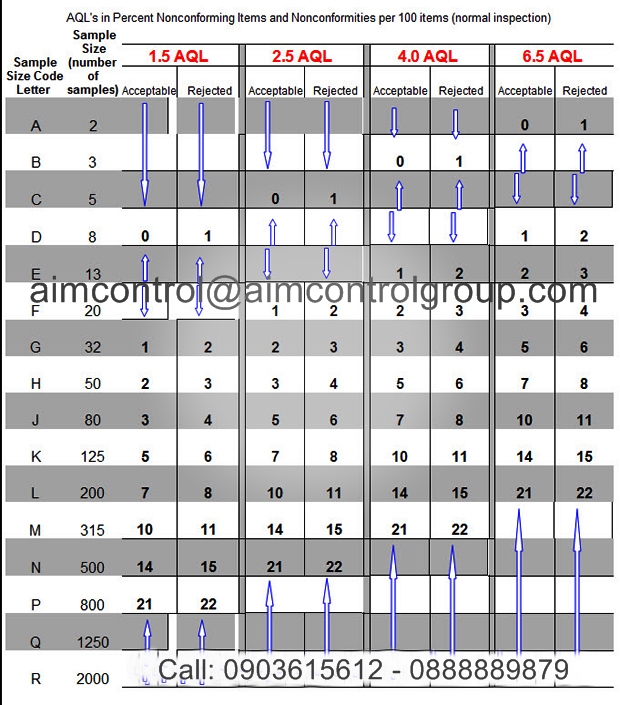
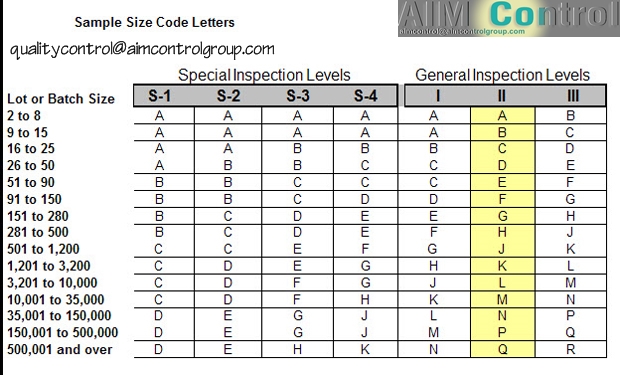
Kindly review the Garment Inspection of AIM Control Inspection Group
